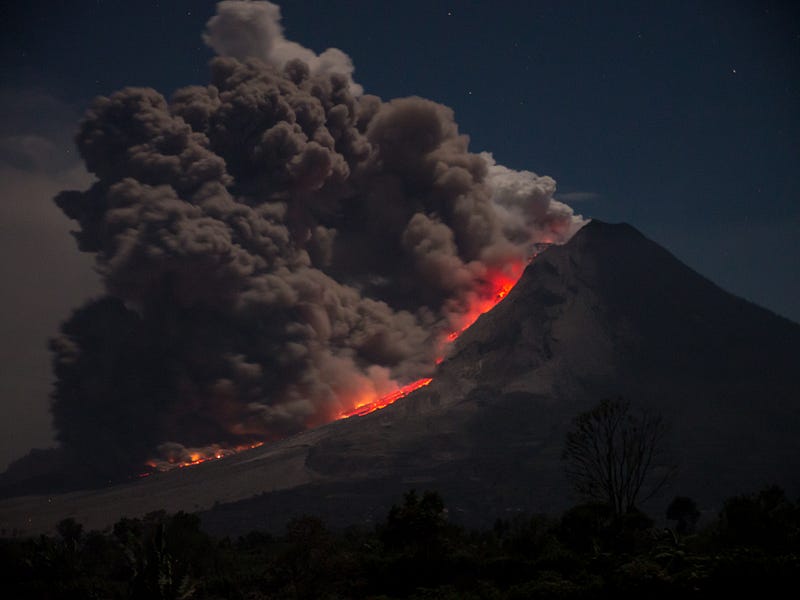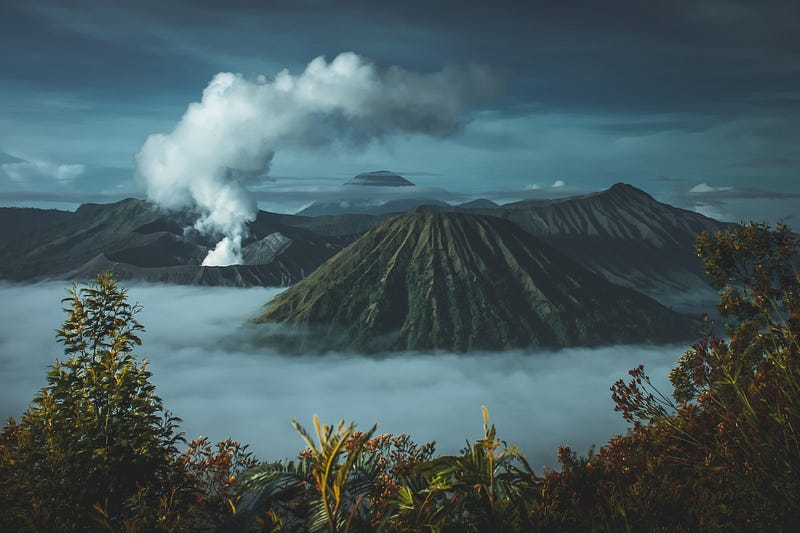# Exploring Supervolcanoes: Key Insights and Implications
Written on
Chapter 1: Introduction to Supervolcanoes
Supervolcanoes are fascinating geological phenomena that have sparked curiosity and concern alike. But what exactly are they? How do we keep track of their activity? And in the event of an eruption, how would humanity cope?

Photo by Marc Szeglat on Unsplash
If you've tuned into channels like History or Discovery, you might have encountered the concept of supervolcanoes. These massive geological structures can span several miles and are capable of unleashing catastrophic destruction. Even the smallest supervolcano could cover the entire state of Texas in a thick layer of ash. Some scientists postulate that supervolcanic eruptions have played a role in historical mass extinctions. While immediate destruction occurs within the volcano's vicinity, the most devastating effect stems from their capability to change global climates. When a supervolcano erupts, it releases vast amounts of ash; while much settles on the ground, a significant portion enters the atmosphere, scattering globally. This ash clouds the atmosphere, reducing sunlight and causing a drop in temperatures, which can severely impact plant life and, in turn, the entire food web.
But how do these colossal volcanoes come into existence? When might the next eruption occur? And would humanity endure such a catastrophic event?
Section 1.1: Understanding Supervolcano Formation
Supervolcanoes, like their smaller counterparts, typically arise in hotspots—regions where the Earth's mantle is particularly hot—and subduction zones, where tectonic plates interact. Here, molten rock, or magma, is pushed toward the surface, forming large reservoirs. When the pressure in these magma chambers exceeds their limits, eruptions occur, violently ejecting lava, ash, and superheated gases. After such eruptions, supervolcanoes often collapse, creating a basin known as a caldera. However, a collapsed supervolcano is not extinct; magma continues to gather beneath the caldera.

Photo by Nicolasintravel on Unsplash
One of the most infamous supervolcanoes is found in Yellowstone National Park, Wyoming. The park itself sits atop a caldera measuring 30 to 45 miles in diameter. Visitors may know Yellowstone for its stunning geysers and hot springs, which are clear indicators of the active magma chamber below. Notably, scientists have determined through radiometric dating that Yellowstone has erupted three times in the last 2.1 million years—a brief period in geological terms. The last significant eruption occurred around 640,000 years ago, leading scientists to estimate that it might erupt again every 600,000 to 800,000 years.
The first video titled "Can The World Survive A Supervolcano Eruption?" from BBC Earth Science explores the potential consequences of such an event and humanity's resilience.
Section 1.2: Assessing Eruption Likelihood
Many media outlets have suggested that since Yellowstone's last eruption was over 600,000 years ago, it is overdue for another. However, this assumption can be misleading. Scientists can estimate average eruption intervals, but these can vary significantly. Unlike Old Faithful, which erupts predictably, the Yellowstone Supervolcano does not follow a regular eruption pattern. Thus, monitoring the caldera's current conditions is a far more effective way to assess eruption risk.

Photo by Purnomo Capunk on Unsplash
Evaluating a volcano's potential for eruption involves several techniques. Scientists often track seismic activity, as the movement of magma underground can lead to increased earthquake frequency. Additionally, the type and quantity of gases released from the volcano can provide insights into the likelihood of an eruption. Satellite imagery is also utilized to observe caldera deformation, which may signal an upcoming eruption. Yellowstone is under continuous observation due to its hotspot location and thermal features, and currently, no signs suggest an imminent eruption.
Chapter 2: Humanity's Survival Prospects
The second video titled "What if a Supervolcano Erupted?" from COLOSSAL QUESTIONS considers the possible outcomes of a supervolcano eruption and humanity's survival capabilities.
When contemplating a supervolcano eruption, one might wonder: would humanity survive? Generally, experts believe that we would. Historical evidence shows that humanity has endured a supervolcano eruption before. The Toba supervolcano in Indonesia erupted approximately 74,000 years ago, causing widespread destruction. This eruption was estimated to be at least 5,000 times more powerful than the famous eruption of Mount St. Helens in 1980. Geological studies indicate that ash from Toba blanketed the globe, resulting in a cooler and drier climate. Although earlier theories posited that human populations nearly vanished, recent archaeological findings suggest that human activity in Southern Africa remained stable before and after the eruption.
Survival during this catastrophic event may have been aided by the nomadic and hunter-gatherer lifestyles of early humans, which allowed for adaptability in response to environmental changes. But would modern humans possess the same adaptive capabilities?
This question invites speculation. On one hand, advancements in society may complicate survival. Unlike prehistoric humans, most people today depend heavily on agriculture, which does not allow for the same mobility as a hunting lifestyle. If a supervolcano were to erupt, farmers would struggle to relocate their farms. Additionally, our complex social and economic frameworks could be severely disrupted by such a disaster, potentially leading to chaos.
Conversely, technological progress may enhance our chances. Modern agricultural practices have improved crop resilience, and genetically modified organisms could help sustain food production amid climatic shifts. Moreover, advanced warning systems and rapid global communication could aid in disaster preparedness.
Ultimately, while the prospect of a supervolcano eruption is intriguing, it's crucial to remember that there is no immediate cause for alarm. Instead of losing sleep over the potential chaos, let curiosity about our world keep your mind active.